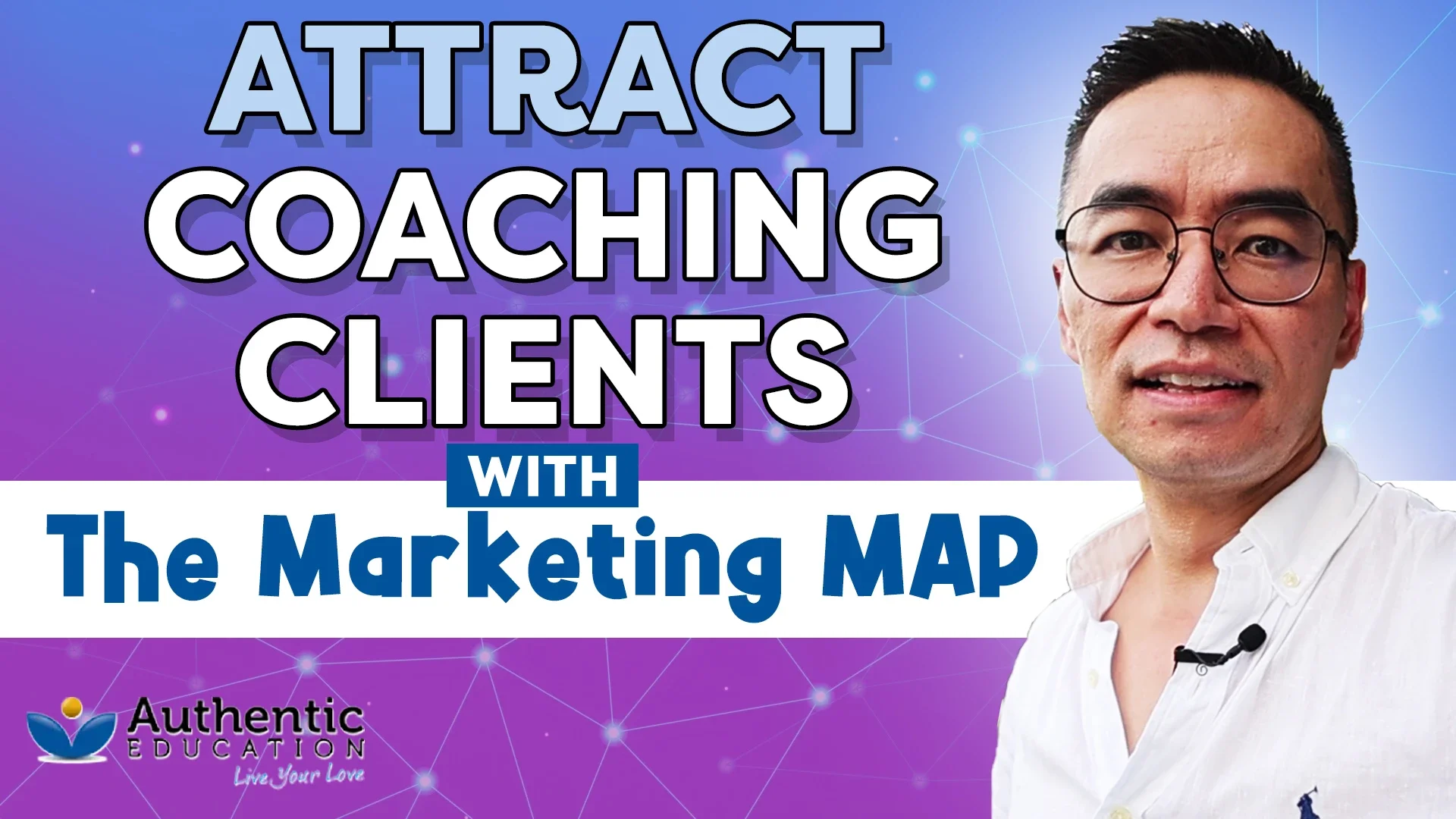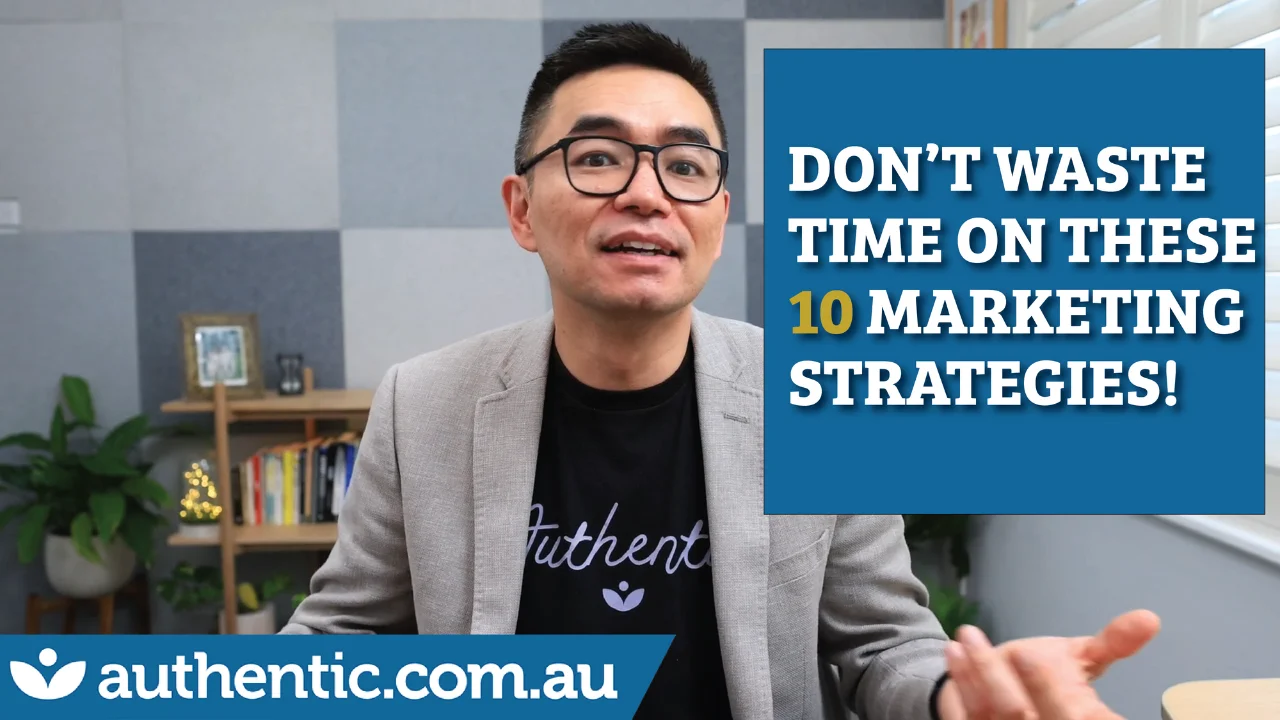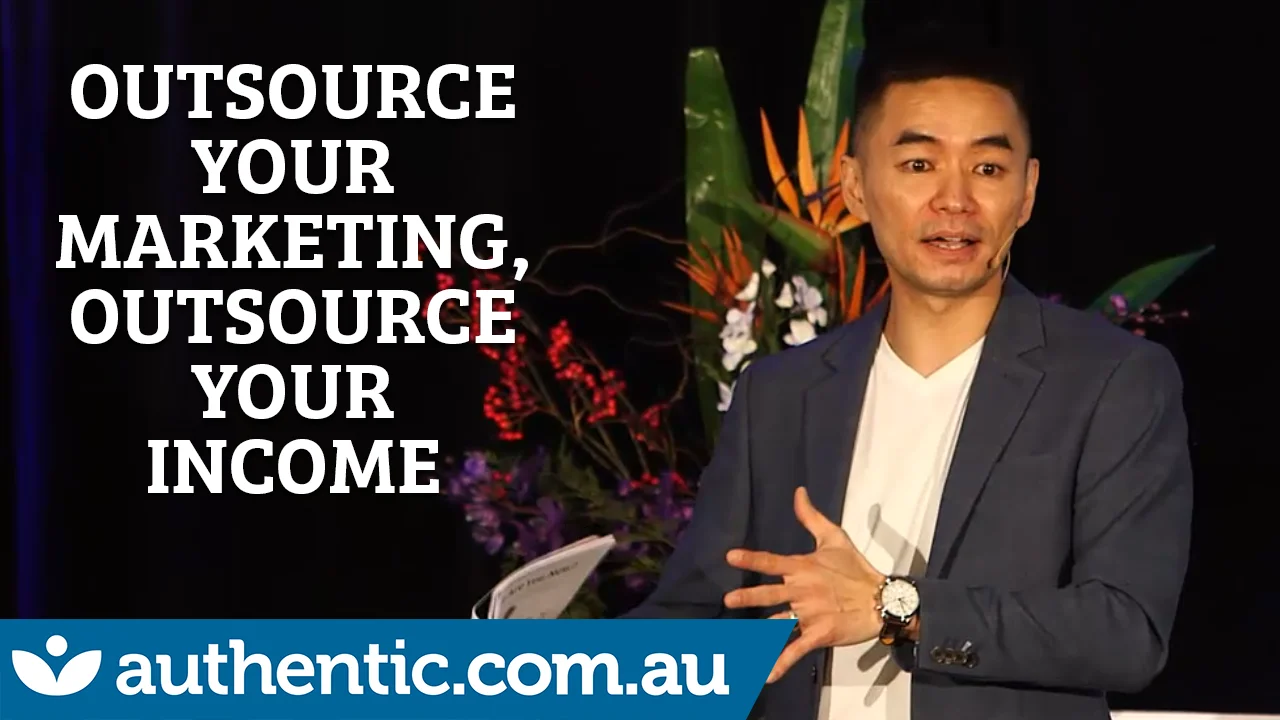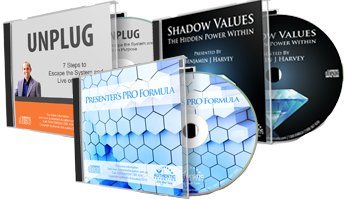If you're a coach, there's 50 different marketing methods you could possibly try. Such as…

10 Facebook Advertising Tips For Small Businesses On A Tight Budget
Advertising on social media (Facebook and Instagram) can be frustrating, particularly if you’re unsure what you’re doing. But what if there were 10 simple things you could do to significantly increase your ROI?
I was recently interviewed by fellow marketing expert and host of #1 Marketing Podcast “The Small Business Big Marketing Show”, Tim “Timbo” Reid.
During this 65 minute interview I share keys insights and learnings from my 12 years experience in marketing, including my Top 10 Facebook advertising tips for small businesses on a tight budget, which you can read below.
To download the podcast, click here.
To download the full transcription, click here.
Below are some really quick wins that a lot of people probably don’t know they can do with Facebook. I didn’t know these myself previously, but I learned through trial and error, so I thought I’d share them with you so you can get started right away.
These are in no particular order, so feel free to mix it up!
#1 Competitor Ads
You’ve got competitors out there. They could be in Australia in another city or even overseas. You can easily search for them either within Facebook, or Google. However Facebook have recently implemented new rules regarding advertising and content transparency due to the recent controversy surrounding Russians being involved with vote tampering for the US Election.
So how do you use this transparency for your business? If you go to the Facebook Ads Library and type your competitors name and you can see all the ads that they’re currently running. You should screenshot those ads. Start creating a library of them yourself.
 Come back in two weeks time. And if they’re still running those ads that probably means it’s working for them. You can take the ads that are working for them and you can model them, as in change them up a bit. Keep the structure but substitute your own images, copy & your own product.
Come back in two weeks time. And if they’re still running those ads that probably means it’s working for them. You can take the ads that are working for them and you can model them, as in change them up a bit. Keep the structure but substitute your own images, copy & your own product.
Don’t start your ads with a blank slate. Start with something that’s already been proven in your industry that’s working but just happens to be in another city or another country. And they’re not direct competitors so to speak.
I wouldn’t really count this as watching your competitors. This is more about market research. If someone was placing a Facebook ad they’d probably go out and look for a Facebook ad template. But why get a generic template of a blog post from six months ago when you can see what’s working as of last week from someone just happens to be in another country.
#2. Lookalike Audiences
People don’t understand that it’s not about having the best food when it comes to your business. While that’s important, what’s actually more important is having a hungry crowd.
One of the most important things in your Facebook ad is who you’re targeting. The easiest way to do that is to give Facebook examples of your best clients. If you’ve been in business for a while or if you’ve got a Facebook page or Instagram profile or a website, you can say to Facebook here is 200 mobile phones or email addresses of clients who have purchased or prospects who are interested already. Upload them to Facebook and you can create what’s called a custom audience.
 Then you say: out of this custom audience of the people I just uploaded find me 160,000 people in Australia who look exactly like them. And then Facebook with its algorithm will find a match. It will go through all the hundreds of different data points of all of those people find similarities and within in about four hours you’ll have 160,000 people.
Then you say: out of this custom audience of the people I just uploaded find me 160,000 people in Australia who look exactly like them. And then Facebook with its algorithm will find a match. It will go through all the hundreds of different data points of all of those people find similarities and within in about four hours you’ll have 160,000 people.
In all my testing of different audiences lookalike audiences are always in the top one or two types of audiences. It’s a lot better than trying to rack your brain thinking about all the interests and likes your ideal customers might have. For example if they like a certain kind of page, then that’s not as good as a lookalike audience of your best customers.
And you can also create lookalike audiences if you have at least 100 Likes of your Facebook page, or you have 100 visitors on your website, because you can say to Facebook “find me people who look more like these people” and you essentially duplicate your your results.
Lookalike audiences are like a shortcut. It’s a case of having a number of existing customers & finding more exactly like them. It’s better than any PR company or anything could ever do in that way because it’s so niche.
#3. You Don’t Need A Website
Some people think if you do Facebook ads it’s mandatory to create a landing page or website and then they have to create a click funnel, which leaves you feeling like you’re getting lost down a rabbit hole.
There’s a thing called Lead Forms in Facebook where people can fill in an opt in form without leaving the Facebook platform. If you imagine someone is scrolling through their news feed they see your ad and they think “I’m interested in that. I put my details in.”
They click a button, up pops a form still within their Facebook news feed which pre-populates their name email address their mobile number if they’ve given it to Facebook in the past – which most people have for security reasons. All they have to do is click the “Submit button” and you’re done. No landing page no website is required.
Facebook then retains all that data so you can scrape that data and put it into your own content management system. You get that information by logging back into Facebook and if you want to automate it you’ve probably heard of a program called Zapier which automates a whole bunch of different online programs. You can automate it so it goes straight into your email system.
#4. Square Videos
Everyone should be using videos where possible because they build trust more than anything else that you can possibly do (other than meeting people face to face). And square videos take up 78% more real estate than rectangle videos.
Make your videos square if you’ve got an existing rectangle video. It’s easily done – you just chop off the left and right parts. As long as there’s no vital information there (which there usually isn’t).
 A square video is another 50% of space below that that video that takes up so much more room on your mobile phone…. which is just a lot more compelling than a rectangular video. People can see your face better on a square video & they can read the text clearly.
A square video is another 50% of space below that that video that takes up so much more room on your mobile phone…. which is just a lot more compelling than a rectangular video. People can see your face better on a square video & they can read the text clearly.
If you want to re-purpose an existing rectangle video , you can use any video editing software. We personally use something like Filmora or Camtasia. Filmora is the cheaper $100 version, whereas Camtasia is a few hundred dollars and then when you export the video you choose the ratio. So instead of doing as typical ratio of 1280×720 pixels, you do 720×720 pixels.
#5. Captioning Your Videos
Captions are extremely useful, as lot of people would watch videos in silence because they’re either at work, they may be on the train, their partners sleeping next to them and they don’t want to make noise. If you don’t have captions on your videos, you’re missing out on two-thirds of the people who watch a video on mobile phone so definitely you want to be adding captions to all your videos otherwise it’s 100% wasted money for placing a Facebook ad or Instagram ad or any type of ad that has a video without captions.
 What I’m talking about is “baked in” (hard-coded) captions. YouTube will add captions for you but they overlay a captions file over the video. But if you go and export that video the captions won’t be baked. We want to make sure that the captions are baked in because when you start testing videos with captions on different platforms and mobile devices it’s very finicky.
What I’m talking about is “baked in” (hard-coded) captions. YouTube will add captions for you but they overlay a captions file over the video. But if you go and export that video the captions won’t be baked. We want to make sure that the captions are baked in because when you start testing videos with captions on different platforms and mobile devices it’s very finicky.
As an example, when you place a Facebook or Instagram ads you can upload a captions file. A captions file is an SRT file that you can upload, but you’ll be very frustrated that it doesn’t appear on every device. So the safest way is to just bake them in so it’s in the video once it’s in the video. You can’t even extract it even if you wanted to.
There are many different ways you can do it, but it gets a little bit technical. The easiest way is go to Fiverr.com and get someone to add captions on your videos. Otherwise you’re going to do a tricky thing with VLC Media Player.
You’d expect to pay anywhere between 10 to 20 dollars. You can get the captions transcribed. There is a transcription service called Rev.com that transcribes anything for a dollar per minute. The turnaround time is 24 hours or less, depending on the length of the video.
#6. Building Relationships
 I feel that far too many marketers and business owners “want the sale right now”. They talk about how good this special offer is, but I always say that marketing is like matchmaking. You don’t meet someone in the street and then ask her to marry you straight away. There needs to be a warm up phase of building a relationship.
I feel that far too many marketers and business owners “want the sale right now”. They talk about how good this special offer is, but I always say that marketing is like matchmaking. You don’t meet someone in the street and then ask her to marry you straight away. There needs to be a warm up phase of building a relationship.
In this day and age the way I like to build a relationship is bygiving solutions to people’s problems in the way of educationbecause it’s free. It builds trust and because I’m educating people I have their time and attention. So all of these great things come with giving away education and any company can do it.
I was talking to a lady who did brow bars in Melbourne about educating someone who’s looking for their services. They’re probably wondering: “Is it safe? What are the dangers of it?” So you could put out an e-book or a video etc all about these solutions to problems she’s currently thinking of right now. Don’t say you’ve got a special on right now. Talk about all of these other issues. And then progress on “the second date”, so to speak. That’s when you can bring up how about you come in for a free consultation etc.
Very rarely do we ask for a whole bunch of money upfront. It’s a better experience to give value because I’m warming you up by giving you some great information first. All the information at the free courses we run is fantastic. But if I just kick down the door and say “Hey, I’m Cham and I’ve been doing marketing for so long…. you want to do a marketing course?” then it falls on deaf ears.
And people want to try before they buy these days anyways.
This is the Internet concept created by Google. It’s a new marketing method called “Freemium”. It’s like free with premium. You can get a whole bunch of stuff for free on Gmail on Spotify on Evernote.
All these applications give so much value, but a small percentage of people of their own volition will be thinking, “I’ll pay for the premium version and then it makes everything worthwhile”. That’s exactly how I run my business.
When it comes to people subscribing, I subscribe to give it all away. It’s not that I’m trying to give everything away. It’s more that every opportunity I have, I want to give as much value as I can whether or not someone sees me again or comes to a course. My main job is to give as much value as possible but I know it’s not like these are the only tips I’ve got.
#7. Test
I think a lot of people try something like spending $50 on one ad with one audience and then think it didn’t work and they just give up. But you’ve got to test. At least seven days and you get to test with at least three different audiences and at least three different types of ads. That would be the minimum amount of testing and that testing could cost you just $100.
It’s actually a lot better for small business owners out there to spend more time on the marketing, as in test for a longer period of days as opposed to spending more money because it’s just the way Facebook works it can pick and choose when ads are going to be the cheapest for you.
 Test of at least three different audiences at least three different ads over a seven day period for at least $100. And before you think you know this 100% isn’t working for me. That’s to be a testing period.
Test of at least three different audiences at least three different ads over a seven day period for at least $100. And before you think you know this 100% isn’t working for me. That’s to be a testing period.
It’d be like if I was a stand up comedian and the very first joke I told no one laughed I think “My jokes don’t work” because I’ve got to test different ways to deliver them, a few different audiences and a few different jokes.
The great thing about having a system that works for you is you only have to get it right once. So think of it like you’re a chef in the kitchen like Jamie Oliver, and you’re cooking up different recipes. You only have to get one recipe to work and you can use it for the rest of your life.
There’s many different metrics that Facebook gives you. I look at click through rate (that percentage of people who see the ad and are actually clicking). They give you something called relevance. It’s a score from zero to ten. Ten being unbelievable and then five being very average.
I’ll be looking at what percentage of the video that they watched. You can only do that for videos obviously but you could see what percentage of people watched it for 25%, 50%, 3 seconds of the video .
And you can even decide to do what we call “remarketing” or “retargeting”. We’ll show a different ad only to people who watched at least half of it. But there’s a whole bunch of different metrics here. The main one is click through rate. Then how many people opt in on the landing page and how many people decide to purchase a course after that.
#8. Emojis
 A very small and quick win which is use emojis. So when you place a Facebook ad you can’t increase the font size, you can’t bold and underline things. So you have to rely on emojis to do the formatting for you. And the reason that’s important is that a whole bunch of text looks very boring to the reader. So I use emojis.
A very small and quick win which is use emojis. So when you place a Facebook ad you can’t increase the font size, you can’t bold and underline things. So you have to rely on emojis to do the formatting for you. And the reason that’s important is that a whole bunch of text looks very boring to the reader. So I use emojis.
I recommend using emojipedia.org and review emojis that are useful, such as the smiley face. It could be a finger pointing down, because I could say “click the link below”.
I could use bullet points so I might have five reasons to respond to the ad but I get an emoji that’s the number one two three four five. Use love hearts, arrows, things like that which kind of break up the formatting with emojis.
Not all emojis have to be comical. There are emojis you could use, such as arrows instead of doing bullet points. There’s an emerging arrow or ticks e.g. “who it’s for”. The numbers don’t lie – emojis get a 12% uplift in click through rates.
#9. Evergreen Ads
Evergreen means it never gets old. So let’s say you’ve got an ad and you say “I’ve got a special in the month of October 2019”. The problem with running an ad like that is I can’t come back in three months time and just switch on that ad. I like to have my marketing be very automated once I’ve done the setup I want to be able to switch it on and it’s all good to go.
If you do evergreen ads they don’t have a date they don’t have a time. I’m not locked into certain things like I run ads for different cities. I don’t name all of the 10 cities I’m going to because I might want to do an 11th city next year.
Why is this important? Because I get to compound my likes, comments and shares so the same ad that I ran a year ago that now has 100 Likes 20 comments and five shares if I decide to switch today it starts with 100 Likes 20 comments and five shares. And that’s massive social proof and trust.
Over two years I once had an ad that got up to eighteen hundred likes 500 comments and 200 shares roughly. That’s massive social proof. When someone sees that you can only do that with Evergreen ads.
#10. Handling Client Objections
 Handle objections in your Facebook ad. A lot of marketers and business owners get so on this track about saying how good something is that it doesn’t even enter our mind about the bad things.
Handle objections in your Facebook ad. A lot of marketers and business owners get so on this track about saying how good something is that it doesn’t even enter our mind about the bad things.
Think about your ad. Think if I was my ideal client reading this and I was a bit skeptical what would I be skeptical about what would be my objections? My objection would be “what if I am not good with technology”. Well if that’s true then put that in the copy.
As an example for my marketing ads I’ll say “learn how to get a 500% return on every marketing dollar you spent, even if you’re not tech savvy, have a small budget or you’re starting from scratch” because I know those are the three biggest things stopping people of even thinking about marketing in the first place and they’re simply not true. You don’t need massive budgets. You don’t have to be doing an I.T. degree just to place a Facebook ad.
Often there’s a lot of negative comments but advertisers are not responding to them, which is pretty terrible. Part of the checklist that I run for placing Facebook ads or any type of ads you get is to come back every couple of days at least. And if the comments are just hateful, I’d delete them and ban the person if it’s not constructive. If the comments are good I reply to them. I ask them other questions. I help them if it’s constructive criticism. I’m all for that as well because if other people are thinking about it like some people might message back “Why is this event free? Is it just going to be a massive sales pitch.”
I explain that we run our business – it’s like Freemium marketing just like Google and I have an answer for everyone to see because that’s what it is.
A small tip on the side while you’re replying to these comments. You might end up having 100 people who like your Facebook ad you should go in and invite them all to like your Facebook page because that’s just free people so to speak who now will like your Facebook page and you don’t have to pay to grow your Facebook likes.
But I would respond to comments. Same thing I do to Google reviews and Facebook reviews. Fingers crossed we won’t get any bad reviews, but I go in and respond to any ones that constructive criticism or even the good ones just to engage people even more.
Resource Centre
Above I’ve mentioned a number of programs. You can read more about them and their services (and costing where appropriate) here:
- Zapier – The easiest way to automate your work
- Fiverr – Find the perfect freelance services for your business
- Rev – Fast, quality transcription service
- Filmora – Simple video editor
- Emojipedia – The emoji search engine
A big “Thank you” Timbo Reid for inviting me to share my insights with his audience on “The Small Business Big Marketing Show”. If you’re interested to listen to his other podcasts, you can listen or subscribe here.
Comments
Subscribe: RSS




